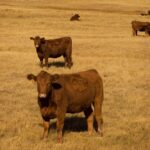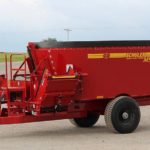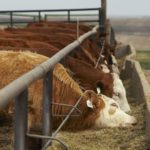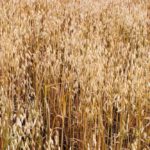In a decision that may have come late for some, New Brunswick, Prince Edward Island and parts of southeastern Quebec and northwestern Nova Scotia have been declared drought zones for eligible livestock producers’ 2020 tax purposes. The federal government on Monday released its list and map of prescribed drought regions where tax deferral on sales […] Read more

Eastern drought zones set for livestock tax deferrals
Regions designated in P.E.I., N.S., N.B., Quebec

Klassen: Cattle producers facing drought-like conditions
Alberta packers were buying fed cattle on a dressed basis in the range of $262-$265 delivered this past week. Using a 60 per cent grading, the live price would be in the range of $157-$159. If a feedlot booked the bulk of its feed grains earlier in winter, feeding margins are now hovering in positive […] Read more

Manitoba to open more Crown lands to haying, grazing
Province now taking requests for permits
Manitoba livestock producers up against dry conditions can now apply for temporary passes to get onto Crown land not normally designated for grazing or haying. The province announced Friday it will make such lands available this year for agricultural use “under certain circumstances.” Permits and land uses will be handled through the Agricultural Crown Lands […] Read more

Ontario extends fruit, forage insurance premium deadlines
Extension offers 'flexibility,' Agricorp says
Ontario fruit and forage growers who have production insurance premiums due this month will now have until June 30 to pay, the province said Monday. The extended premium payment deadline applies only to production insurance plans for fruit, strawberries and asparagus — and to the forage rainfall insurance plan, which uses rainfall as an indicator […] Read more

Manitoba extends forage insurance survey deadline
Review's face-to-face public meetings cancelled
Manitoba’s provincial review of its relatively under-subscribed crop insurance offerings for forage growers has extended its deadline for grower comment. Manitoba Agricultural Services Corp. (MASC) last week announced it has cancelled all in-person public meetings on its forage insurance review, citing the COVID-19 coronavirus pandemic. But the agency has extended the deadline to take part […] Read more

Hay disaster benefit kicks in for Manitoba growers
Eligible Manitoba forage growers can expect to share in a $5 million hay disaster benefit (HDB) for the 2019 crop year. Manitoba Agricultural Services Corp. (MASC), the provincial crop insurance agency, announced Friday that the HDB has been activated and benefit payments to eligible forage producers on about 1,500 claims will begin “shortly.” The HDB, […] Read more

Vermeer buys TMR mixer maker Schuler
U.S. hay and forage equipment manufacturer Vermeer Corp. is expanding its reach in the cattle feeding business with a deal for fellow Iowa firm Schuler Manufacturing. Vermeer announced Wednesday it purchased Schuler for an undisclosed sum and that Schuler products will still “initially” be sold under the Schuler brand, but with an “intentional transition” to […] Read more

Klassen: Feeder cattle market drops on soft demand
Compared to last week, western Canadian yearling markets were down $4-$6 while calf prices dropped $5 to as much as much as $10 in some cases. Comments from order buyers reflect very sluggish demand for this time of year. Ontario farmers have harvested about 50 per cent of the corn crop and buying interest from […] Read more

Oats market steady, watching harvest
MarketsFarm — Western Canada’s oats market is stable at prices a bit better than a year ago, as harvest gets underway and participants wait to see how much will move off the combine to the market. Early yield reports range anywhere from 80 to 140 bushels per acre, said Tyler Palmer, grain buyer with Emerson […] Read more

Prairie hay shortage on horizon
MarketsFarm — While rain across the Prairies has eased concerns of an all-out drought, worries of a hay shortage going into winter haven’t ceased. Darren Chapman, a Virden, Man. producer and chair of the Manitoba Forage and Grassland Association (MFGA), explained that regrowth following the first cut of hay has been strong. First-cut hay crops […] Read more

